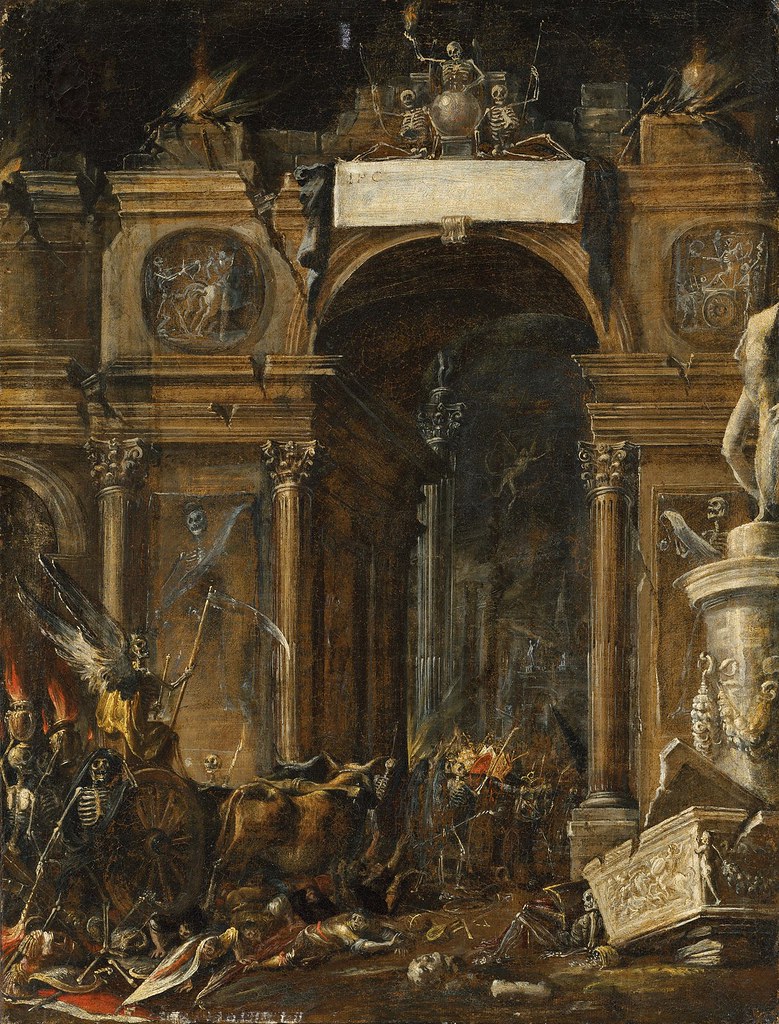Johann Georg Tschortsch (c.1680-1737)
- Requiem (c-moll) Concertantibus 4. Vocibus (1731)
Performers: Jörg Wаschinski (soprano); William Purеfoy (alto); Bernhard Schnеidеr (tenor); Rаlf Ernst (bass);
Kammerchor Des Fеrdinаndеums; Aurа Musicаle Budаpеst; Josеf Wеtzingеr (conductor)
Painting: Francois de Nome (c.1593-c.1644) - The triumphant entry of Death into a city with classical ruins
Further info: Tiroler Tage Für Kirchenmusik 1999
---
Austrian composer. Almost nothing is known about his early years and his
extant music is the most valuable source about his outstanding skills.
He came from a family of musicians who held the office of parish
organist in the Tyrolean town of Schwaz for several generations. He
probably received early music lessons as a choirboy in Innsbruck. Also
there he probably attended the Jesuit high school where his name is
mentioned in the school performances. In 1704 he was ordained a priest
and he spent the following years with his family in Schwaz and as
chaplain to Count Fieger at Friedberg Castle near his hometown. In 1729
he was finally awarded the Fugger benefit at the Schwaz parish church, a
post he held until his death on March 26, 1737. As a composer, he wrote
at least three collections of church music printed in Augsburg. His
extensive compositional skills are first and foremost based on his
unusual talent; his great knowledge and the sovereignty of its use is of
course also deduced from his musical ambience. His work as a choirboy
in the Innsbruck court orchestra must have given him fundamental
experience, where he not only got to know the variety of church music
genres and forms, but also received continuous music lessons and thus
experienced practice and theory in an ideal way and at a high level. As
an example of his mastery, his music can be currently found in archives
and libraries in Austria, Germany, Switzerland, Hungary, the Czech
Republic, Slovakia, Croatia, England and the USA.

Cap comentari:
Publica un comentari a l'entrada